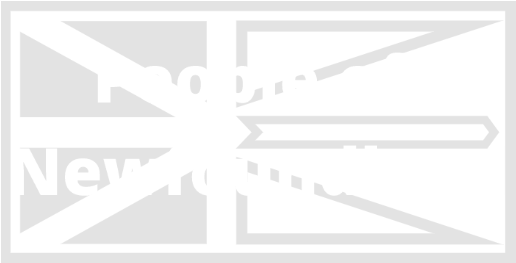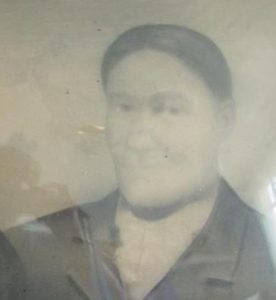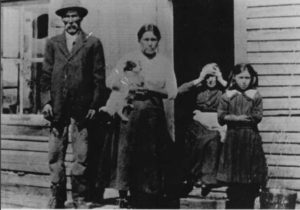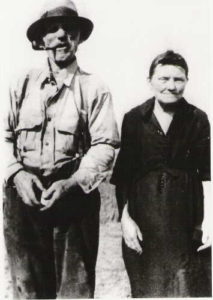
The following is a very basic outline of DNA and how to use it within the Newfoundland Gedmatch Facebook Group.
You must have completed a DNA test at AncestryDNA, FamilyTreeDNA, 23andme, MyHeritage or other DNA testing company and have uploaded to gedmatch.com. Also, you must have Newfoundland Ancestors to join the group. I was asked by group members to do a bit of explaining about DNA segments so I put this quickly together to hopefully give the users of the group the gist of the basics.
First things first…
DNA can be complicated but for the use of DNA testing to assist your genealogical/family tree research you can just learn the very basics, which are:
- Everyone has 23 Chromosomes of DNA! All packed with DNA segments which have been passed down from our ancestors to us.
- Every chromosome is split in HALF. One side from our father, one side from our mother.
- The 23rd Chromosome is an X Chromosome and this is what is referred to as X DNA. This has a unique inheritance which will be explained in another article.
- AND THE MOST IMPORTANT! If you share an identical segment with someone, it means it came from a common ancestor of you & that person! If another person overlaps on this segment (doesn’t have to be the exact length – just if it overlaps), matching the 2 of you, then that person also has that common ancestor and so on!
THAT’S IT!
So how do you know what the location of the segment is that you share with your DNA relative?
Navigating to the One-To-One Comparison Page on Gedmatch, it looks like this:

Submit your kit #, and the kit # of a DNA relative.
Make sure you select “Position Only.”
After submitting, your results of the one-to-one comparison should look like this:

For the example, I named the first kit “Person 1” and second kit “Person 2.”
Person 1 & Person 2 have a known paper trail common ancestor in the people, Thomas Hynes (1811-) and Elizabeth Saunders (1811-). They are their 2nd great grandparents.
I have labelled the results page so you can know what everything means:

As Follows:
- This is the Chromosome #. Person 1 & 2 have matching segments on Chromosome 3, twice on Chromosome 4, Chromosome 6 and finally Chromosome 22.
- This is start location of the matching segment on the chromosome.
- This is end location of the matching segment on the chromosome. So Person 1 & 2’s matching segment is from 111,582,828 to 128,607,389.
- This is the length of the segment. Usually you should only focus on segments greater than 7 to protect yourself from false matches.
- This is a unit of measurement. You do not have to know what this means.
- This is the length of your largest segment that you share with your match.
- This is the total length of the segments combined. This is how DNA companies estimate your dna relationship.
- This is your estimated number of generations from your Most Recent Common Ancestor. Usually you take that number and subtract 1 from it to get your cousin relationship range. In this case the matches most recent common ancestor is 3.8 generations, which gives you 2.8. The range would therefore be 2nd-3rd
Now that you know what the one-to-one page means, you can now interpret it to help you figure out your UNKNOWN matches. A large majority of your matches, probably 95% or more you will not have a known paper trail common ancestor that you can figure out from each other’s trees.
UNKNOWN MATCHING USING GEDMATCH:
Using the example of Person 1 and Person 2, and their common ancestors Thomas Hynes & Elizabeth Saunders, we can label the segments they share as coming from Thomas & Elizabeth. These segments on Chromosome 3, twice on Chromosome 4, once on Chromosome 6 and Chromosome 22 are now known locations for you of Hynes/Saunders.
A reminder of Person 1 & Person 2’s match:

So, what happens if someone else matches on these segments, and you don’t know their relation to you? To illustrate this, I will introduce Person 3, also known as the unknown match.
Person 1 just recently received this new match with Person 3 and they have no idea how they are related. They have matching segments on Chromesome 4, 12 & 13.
However, Person 1 notices that on Chromosome 4 from 142,000,000 to 154,200, 255 , Person 3 overlaps on the segment with Person 2 who is a known Hynes/Saunders relation! This is a strong indication Person 3 must be related through the Hynes/Saunders’s as well. To confirm they come from this line, you need to do a one to one comparison between Person 2 and Person 3.
REMINDER from earlier: There are two “halves” of each chromosome. So, an exact matching segment may be on either half. this is why you need to check Person 2 and Person 3 to see if they match. If they DO, then they are on the same half of the chromosome and ARE both from the Hynes/Saunders line.
Here is the one-to-one comparison between Person 2 and Person 3:

PERFECT! Person 2 and Person 3 also OVERLAP from 144,625,511 to 154,199,391 on Chromosome 4! (Important to note: If the match was for example 140,000,000 to 150,000,000, it would still be considered an overlap – doesn’t have to be the exact same length)
Person 3 definitely has some relation to Thomas Hynes & Elizabeth Saunders based on their segment match! Now you know where to look in your tree to find a paper trail from the unknown match to your ancestor! It’s possible Person 3 could be descended from Thomas & Elizabeth themselves or from one of their siblings, or another way. But it gives you somewhere to start. So many people do not see a paper trail connection to their cousins and then just give up!
I have broken down brick walls, discovered new relations of my ancestors going back hundreds of years by grouping my unknown matches this way. For example a recent discovery of mine: For years I had been getting matches from descendants of the Moulton family of Burin to descendants of my John & Elizabeth Saunders on known Saunders segments. I did not put together that these matches all descend from the Moulton’s until I noticed all of the matches matched on the same segments! It is now my belief that the matriarch of the Moulton family was an aunt to Elizabeth Saunders. Their maternal line will be confirmed by a mtDNA test in the future. If they share the same mtDNA, the aunt/niece relationship theory is given more evidence.
FOR ALL NEWFOUNDLAND GEDMATCH USERS:
You will often get tagged by new group members as a match they’ve received from the list Matchmaker gives them.
In response to their tag you should list any relevant surnames and locations along with a screenshot of your one-to-one comparison with them! This is IMPORTANT no matter if you know the relation to them or not. 1) If you know the relation, that helps you and them know that the segments you match are come from your common ancestor. You can make note of these segments for future reference to figure out your unknown matches! 2) If you do not know the relation, you can view the segments and compare them to your known relations segments and possibly fit them in as related to one of your ancestors!
I suggest using Microsoft Excel to keep track of your segments you share with your matches, but any way to keep track is useful! DNA is powerful for genealogical use, use it to be the best of it’s ability!
Important Note: Be careful when you are related to someone by paper trail in more than one way. If you KNOW that you are related in more than one way, label the segment under the surnames of all the ways you are related. Then you can by process of elimination figure out which segment belongs to which ancestor by checking who else matches on those segments, hopefully finding another known relation on the segment confirming it. This happens a lot in Newfoundland and it’s good to start labeling segments from people who you know could only have 1 way of relation to you.




Thank you!
Great job Devon! Thank you! Will have to check new relatives.
Thank you so much for putting this together!
Thanks for taking the time and the great explanation.
Ok printing and and reloading at my matches
Thanks heaps
Thank You. A lot of great information
Excellent and very descriptive info
Thank you
This is amazing for newbies such as myself tha k you.